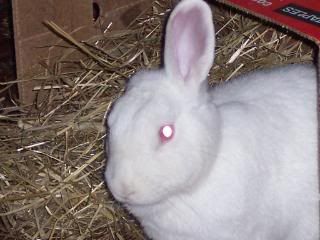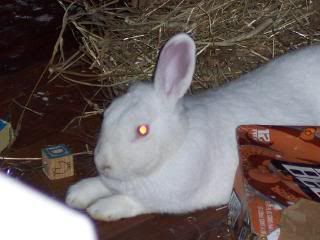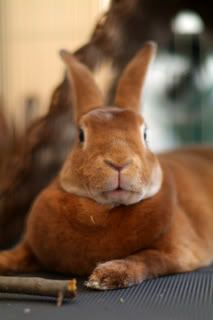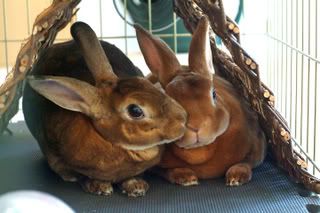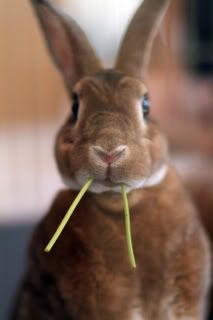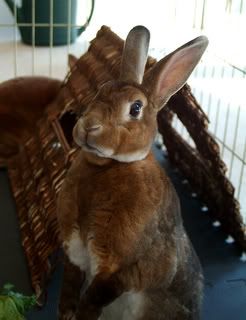NorthernAutumn wrote:
Do you have a comparison to the human eyeball? I'm thinking it's similar to the black part of our eye... maybe not?
Exactly the same. The "black" part of both our eye and a rabbit's eye is just an adjustable-size hole - the iris - behind the lens, which allows light into the eyeball. (By the way, that's also exactly the same as the "aperture" in the camera lens)
The light passes through the inside of the eyeball and falls on the retina (the back part of the ball). Some of the cells back there are reflective, so if the angles work out right, a very bright light may bounce right back out the iris and through the lens and... redeye! (or green, or some other color, depending on the animal - the reflection in humans and bunnies are red).
The angle of the light is the key - to get redeye you need light to go from the flash to the retina and be reflected back into the camera lens. If the light enters the eyeball at an angle, any light which reflects out won't come back into the camera lens. That's why an off-camera flash, like Stan used for the shelter pictures, gets less red-eye, when an on-camera flash near the lens would . The angle from the off-camera flash to the eye is different from the angle from the eye to the lens, so you get less reflection (look at the shadow of the white shelter bunny's chin on her chest - you can see that the light is coming from above her head, not directly at her).
The angle is why there's no redeye in the picture of the shelter bunny with her nose right at the camera - her eyes are pointing sideways, so no light can bounce back into the camera. Luvthempigs bunnies in the examples are looking right at the camera, so the flash bounces right back again and you see redeye. That also explains why sometimes two pictures taken of the same rabbit at nearly the same time may show redeye or not - if the rabbit looks away, so that there's no direct path for the flash through the iris and back out again, you don't get redeye.
Some cameras have a "redeye reduction" mode, which is designed to minimize human redeye, but I'm not sure it would work very well with rabbits. That mode fires the flash a few times before it takes the picture, so that the iris closes down before the actual flash fires. The idea is that by reducing the size of the opening, it's less likely there will be a path for the reflection. Rabbits' eyes do not have the same degree of "adjustability" that ours do. Besides that, the repetitive pre-flash might bother them, and you can't get a good picture when the rabbit's run away.

